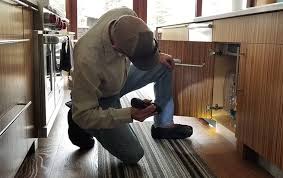A home inspection should be done at least once in a year to check for termite infestations. You do not need a particular skill to perform a termite inspection. All you need for a thorough termite inspection is to follow some set of instructions in this article.
However, you should get professional termite inspections every few years, especially for homes with lots of wood and history of the termite inspection.
Required Tools:
- Screwdriver or Pocket knife
- Coveralls
- Bright flashlight
What To Look For During Termite Inspection
The task of the termite inspection is often a dirty one. You may need to buy a pair of disposable overalls and a pair of gloves. A bright flashlight is also important as other tools. It is useful in illuminating dark or dim areas. A flathead screwdriver allows you to investigate wood and know its weaknesses and ascertain if there’s termite infestation. During checks for termite attack, here are some things to watch out for such as damaged wood, live termites, and mud tubes.
- Mud tubes: Underground termites often build nests in the soil (moisture source) and build highways referred to as “mud tubes.” These mud tubes run vertically and connect their nest to woods. Mud tubes are a significant indicator of termite infestation in homes and properties.
- Damaged wood: A termite infestation on wood is often evident with a crushed look on the wood surface or at structural joints. If you hit the damaged wood, with the end of a knife or screwdriver, you’ll hear a dull sound. Another way to inspect wood suspected of termite infestation is probing the surface to expose tunnels. Subterranean termites dig up tunnels that are parallel to the wood grain.
- Piles of wings: Before insects develop further, they shed their wings, often scattering them in piles near light sources or windows.
- Drywall or brittle.
Likely Areas of Infestation
These are the areas that require close inspection for signs of an infestation. Always remember that termites are often found near ground level. Below are other places they could be found within the house:
- Wooden pieces of construction in crawl areas and basements
- Window sills and frames, especially in the basement, subfloors, wood decks, support posts, joists, and supporting piers
- Surfaces where concrete elements are joined to wood which include steps, porches or slabs
- Cracks in expansion joints, brick construction, or cement: These are areas where termites can gain entry
- Wood piles and debris close to the foundation: These include tree stumps, fence posts, exterior basement windows, and door frames
After you have tried out the inspection steps above and you don’t get respite from termite infestation, then your home may be infested with dry wood termites. Yes, dry termite infestation is possible, and you won’t be able to handle it personally. You should reach out to professional termite exterminators to carry out a thorough termite inspection on your home and property.
At the time of inspection, a professional will check the home exterior, garden, fence line, garages, and sheds.
The technician aims to ensure that there are no external risk factors capable of infesting the home. They will also check for termite nests around tree stumps, and other hideouts that termites stay. After the inspection is completed, professional exterminators will give you suggestions on how to keep your home free from termites.
